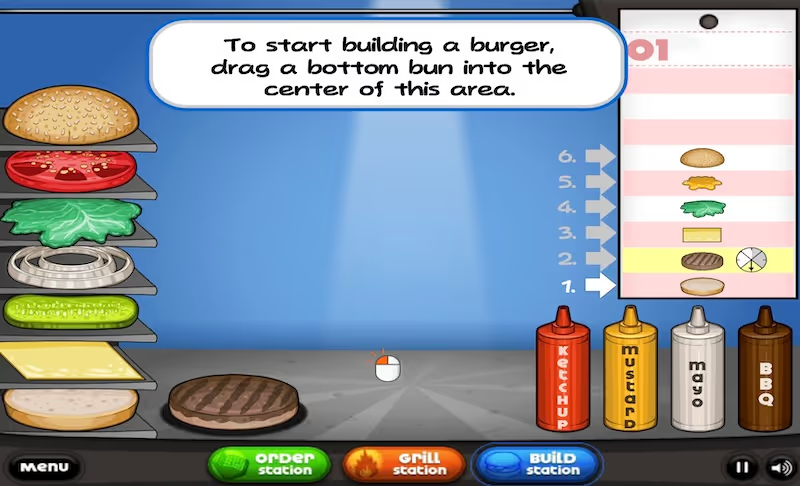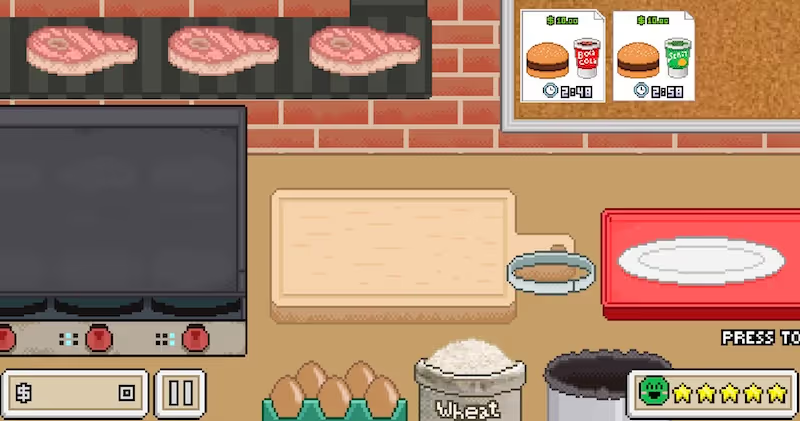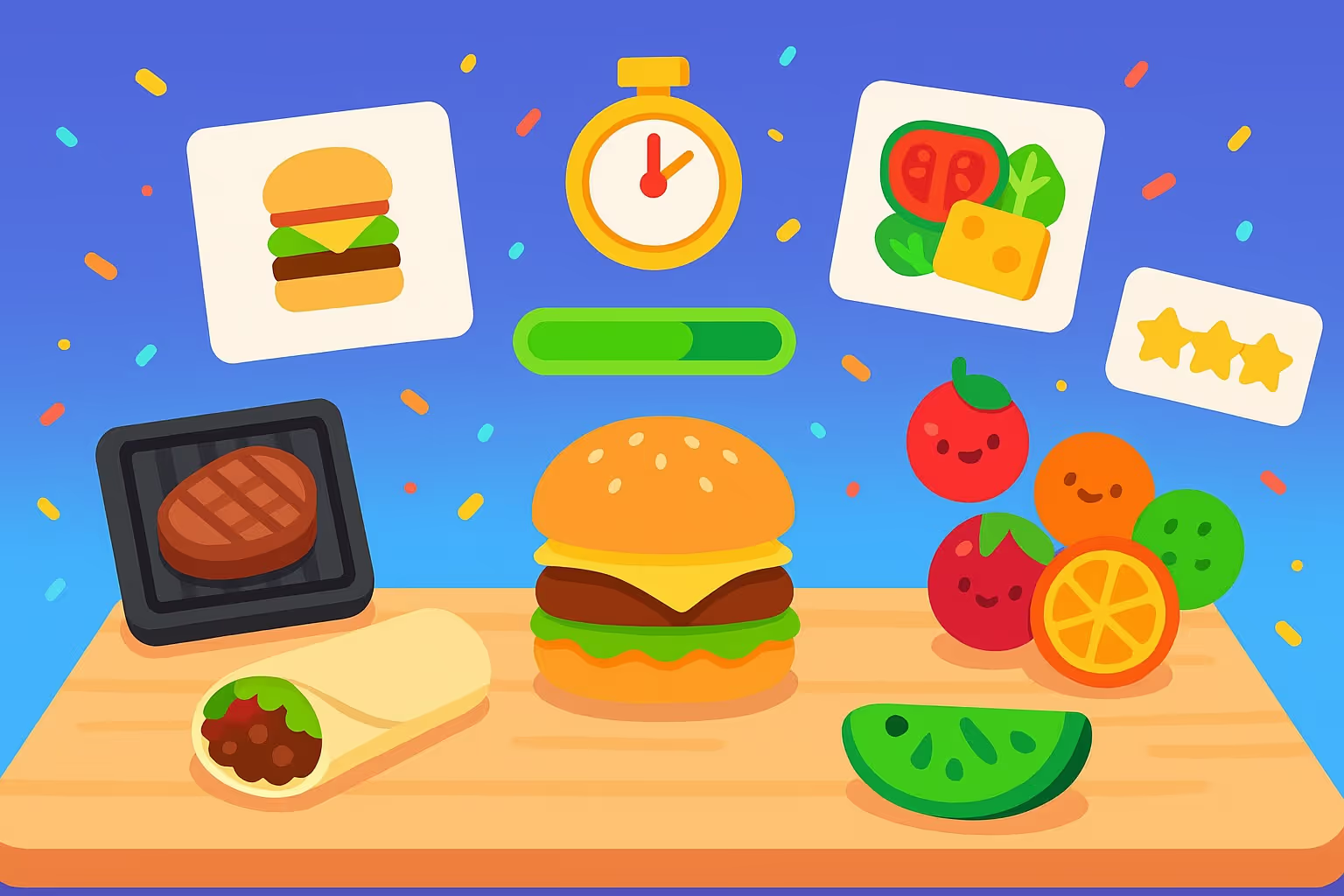Five Minutes to Lighter: The Food Games That Reset My Brain
Quick, no-install cooking games that kids, teens, and adults can play in the browser. Relax, practice patterns, and find flow—five minutes at a time.
I spend a lot of time around food—shopping for it, cooking it, photographing it, and then writing about it. It's both my job and my joy. But even food nerds, like me, need an easy way to switch off without feeling like we just lost an hour to scrolling.
Lately, my favorite reset button has been playing food and cooking games on my tablet. And I will tell you exactly why I love them so much.
But before that, I want to be honest for a second and say that I don't walk around with my tablet all day long. However, I do spend a very big part of the day on my laptop.
So imagine how happy I was to discover CulinarySchools.org's kids-games hub. I went in looking for quick fun. I came out with a rotation of titles that genuinely relax me, keep my brain pleasantly focused, and all while taking a quick break from writing.
Why food games belong in your day
And to get back to initial topic I want to say just this: food is a language we all speak. Ingredients, steps, heat, plating—simple grammar, endless stories.
The first time I learned that grammar, I was a kid in post-communist Romania, standing on a chair, elbows on the counter, watching my mother cook with both hands and all her heart.
I wasn't allowed near the oven or the knives, and back then, toy kitchens were a fantasy. I watched, I learned patterns—yet I couldn't do.
But these days, kids get to do and they get to do it safely. Food games let them follow sequences, recognize shapes and orders, and feel the satisfaction of getting a plate "out." On the other hand, teens practice calm under a growing queue. And last but not least, adults enter that soothing flow of small choices and steady wins.
So basically this is why I love food games: they don't replace cooking, they rehearse it—focus, timing, mise en place—without the risk or the cleanup.
And the best part of playing them on a browser? They live on the web, so you can open a tab, play for a breath or two, and close it feeling lighter. Below are the ones that stuck with me—and a few notes on what helps them shine.
The games I keep coming back to
DC Super Hero Girls Burrito Blitz (my personal favorite)
This is exactly the low-friction fun I want when my brain is cooked. You assemble tacos and burritos to order, with just enough time pressure to keep you engaged while still feeling light.
There's a rhythm I love: read the ticket, build in order, hand it off, move on.

It nudges you to scan, prioritize, and execute—basically the home-cook superpower. It's snackable, satisfying, and dangerously makes you think about playing "one more round."
Papa's Burgeria (still the best queue-management lesson)
There's a reason the Papa's series has a loyal following. You take orders, grill patties correctly, stack ingredients in the right sequence, and keep the line moving.
It quietly rewards attention to detail and punishes distracted flipping, which is deeply satisfying if you've ever overcooked a burger in real life.

It's basically sequencing and timing, gamified.
And the great part about this one is that it's also available to be downloaded on both Android and iOS devices.
Suika-style merges (calm strategy with a side of discovery)
The watermelon/fruit-merge idea is simple and addictive: drop a piece, match two of the same, watch them merge into something bigger, don't overflow the bin.

The food-themed variants are extra fun because they double as a tiny culinary tour—kids learn silhouettes of foods and start asking questions.
For me, these are the palate cleansers between faster games: quiet, strategic, and oddly zen.
Pixel-retro burger stations and multi-step builds
I have a soft spot for the retro burger builders that make you run a simple production line: bake bread, grind, cook, assemble, serve.
They look cute, but they also teach you how bottlenecks form. If the bread falls behind, the whole system lags.

If you fiddle too long with toppings, the queue stacks up. It's a playful taste of throughput thinking without turning into spreadsheets.
And if you are a Millennial like me, this game will bring back so many childhood memories regarding computer games.
What these games actually build (without turning into homework)
Timing and sequencing. Most food games are timing puzzles in disguise. Do the right thing at the right moment, in the right order. That's cooking. That's project management. That's life.
Pattern recognition. Ticket says bun, patty, tomato, lettuce? You copy the pattern. Two identical fruits collide and become the next level up? You start predicting outcomes. It's pattern-matching baked into the fun.
Systems thinking. Multi-step stations force you to see connections: if step two slows down, step four suffers. You feel the system hum when you make small adjustments. That feedback loop is addictive in the best way.
Cultural curiosity. Food themes lead to good questions. What is this ingredient? How is it usually served? Can we try it at home? A quick play session can become a mini gateway to new dishes—simple wraps, sliders, or a colorful fruit plate.
One usability wish (applies to the whole library)
I don't know if anyone at CulinarySchools.org will read my article, but if they do, I do have one request: please give me a full-screen or easy scale-up toggle.
I don't sit very close to my monitor, and on some titles the play area feels a bit small.
Many newer games already look great at normal size, but a clean, built-in "go bigger" button would make casual play at a distance much nicer.
It's not a deal-breaker—I use browser zoom when I want a closer view—but a native option would be a lovely quality-of-life upgrade.
Why I prefer web play over installing another app
I'm picky about what lives on my phone. Web-based games win because they cut the friction to almost zero.
- One-click start. No account, no install, no permissions. On shared family computers or school devices, that simplicity matters.
- Cross-device friendly. If it runs in a modern browser, it usually runs everywhere—laptop, tablet, desktop—without juggling app stores or operating systems.
- No storage stress. My camera roll is already full of pasta and potato photos. I don't need a game adding hundreds of megabytes on top.
- Instant variety. I can hop from a burrito stand to a merge puzzle to a short brain teaser in seconds. That variety keeps sessions fresh and prevents over-focusing on one mechanic.
- Easier supervision. For parents and teachers, it's simpler to keep play inside a trusted site on a shared browser profile than to approve and manage multiple app installs. The food focus keeps everything on-theme and approachable.
Make play time a touch more meaningful (without killing the fun)
- Narrate with younger kids. Saying steps out loud—"bottom bun, patty, tomato, lettuce"—turns a simple build into a sequencing exercise. They'll start anticipating the order faster than you think.
- Set a mini goal. "Let's reach the next merge level, then stop." Clear finish lines end sessions on a win.
- Connect to the kitchen. After playing, pick one tiny thing to make for real: a quick tortilla wrap, mini sliders, a fruit plate arranged like your best merge. That screen-to-plate link makes the time feel productive.
- Rotate genres. I like bouncing between a service game, a merge puzzle, and a short logic drill. It keeps the brain engaged without getting stuck in a loop.
Tech & accessibility notes
- Most of the newer titles are lightweight web games that run directly in modern browsers and scale fairly well.
- Some fan-favorite classics (like parts of the Papa's series) are older Flash games running through an emulator. They play fine, but full-screen and scaling can feel more rigid. If you sit farther from your screen, browser zoom is your friend until a native toggle appears.
The bottom line
If you love food and want a low-effort way to unwind that still feels a little productive, these games are an easy yes.
They're light enough for a coffee break and focused enough to scratch the "let me solve this" itch.
Kids practice focus and order without the lecture. Teens learn gentle planning and time management. Adults experience that quiet flow where the mind settles because the hands—virtual as they are—have something simple, clear, and satisfying to do.
My advice? Start with the burrito game if you want instant flow. Add a session in Papa's Burgeria when you're ready to juggle a few more plates. Pepper in a suika-style merge when you crave calm strategy, and treat yourself to a retro station builder when you want to visualize the whole production line from start to finish.
That rotation is my happy place: playful, soothing, and surprisingly good at resetting my brain after a long day of real cooking.
And yes—the burrito one has my heart. Give me tickets to read, ingredients to stack, and a queue to keep happy, and I'm there.
If you also like to unwind with something hands-on (without actually chopping onions at 10 p.m.), you'll probably be there too.





